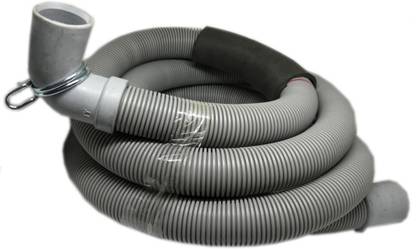There are many good reasons you should consider buying new washing machines or upgrading an old model. It will clean your clothes more effectively and will make them more efficient. But there’s also the promise of shorter cycles which means less time spent running around in search of things that must be done while trying to not forget something important at home like kids sporting events. Some commercials promote certain brands that make people happy when they wash their clothes. Although this is contingent on the individual and the specific features each model provides however, it’s clear that these machines perform best when properly installed.
Connectors for Washing Machine Drain Hose
There are two options for connecting the drain pipe of your washing machine. In order to dispose of wastewater, you have two options. One is to put in a vertical pipe. The second is to hang it above a open sloping sink.
1. Slop Sink Connection
There are a variety of ways to drain your washer however the slop basin is the most popular. This particular installation comes with a number of potential risks. It could cause flooding in the filter, as there is a gap of air between the hoses. Also any force that is applied by the spin cycle can damage anything inside either device.

2. A Drain Pipe Dedicated to Drain Pipe
You may want to consider an individual connection to your drain hose for your washing machine. These pipes are able to drain the water out of the washing machine more efficiently than drains for kitchen sinks. They are also larger than regular plumbing and aren’t likely to get blocked or be sucked out as easily as would be the case when they were connected directly below our dishwasher. The connections can also be found at higher in the elevation. This is because there is less risk using these pipes instead of connecting them to one indoor line, which is connected through an opening (or door).
3. Maintenance of the Washing Machine Drain Hose
Connections to the hose may be difficult and confusing, however, when you set it properly, your home will stay cleaner for longer! You should also ensure that the hose and attachments are maintained clear. Install filters at both ends of drain pipes, use your own made from old socks or pantyhose when needed. This will keep lint from becoming trapped inside, which can result in obstruction due to lack of pressure from water pushing through them.
Common Materials for the Washing Machine Drain Hose
1. Stainless Steel Braided Drain Line
It’s not as pliable or rigid like stainless steel. It’s wrapped in a plastic-coated mesh that is resistant to physical damage like twists, cuts, and bursting easier than other materials available on the market currently! To show how much care was taken with this particular aspect certain brands refer to their items “burst-free”.
2. Rubber Drain Hose
Rubber hoses are a good alternative to the more costly metal or plastic hoses. It has existed for a long time. These days, models come with reinforced rayon mesh or braided to boost strength. However, if you often use it and you’ll need one that’s strengthened. These models are ready-made, which means you aren’t required to create the models.
For more information, click flexible drain hose for sink